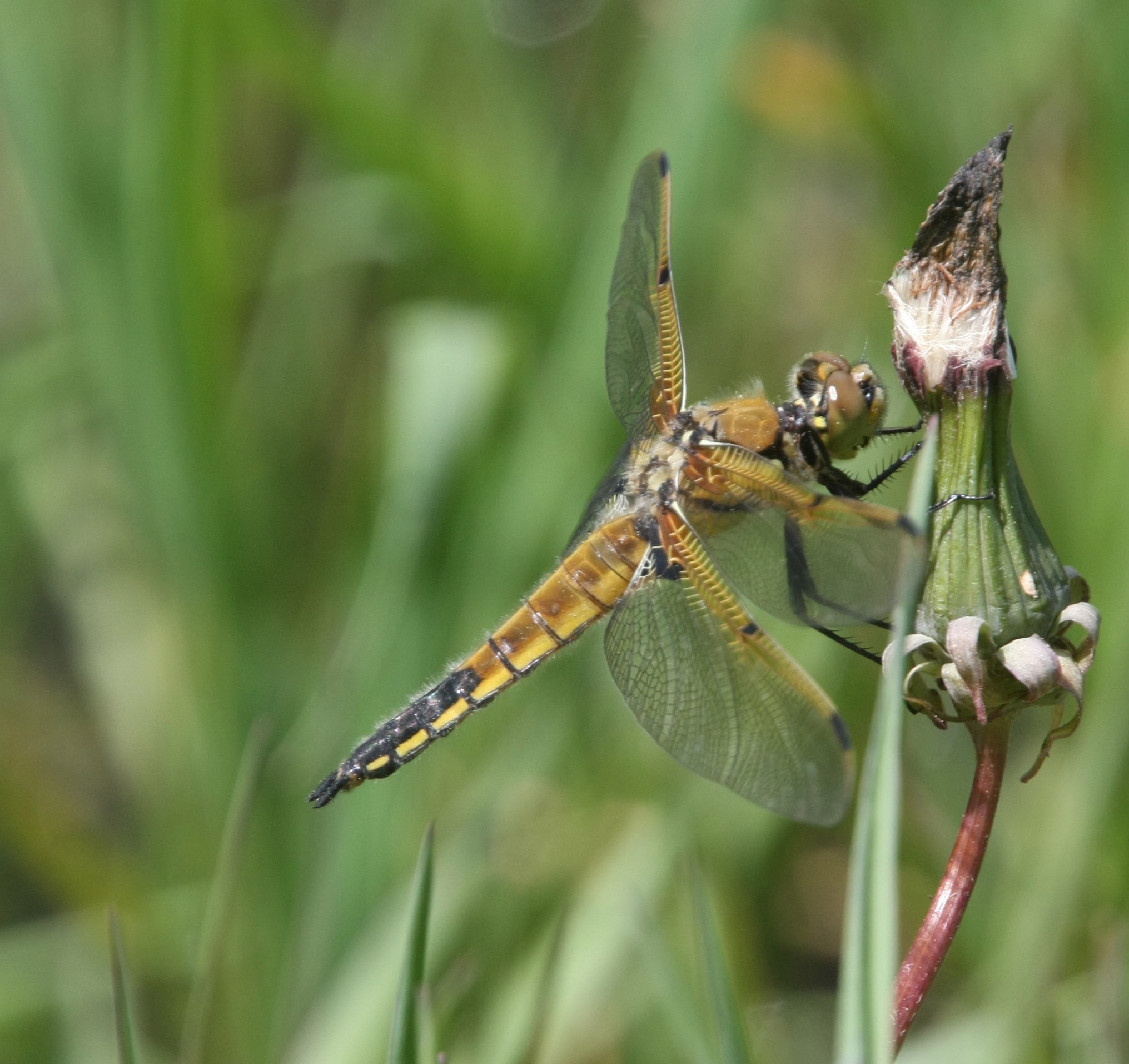Interactions
As stated in the Classification page, the four-spotted chaser received its common name from its behavior toward other organisms encroaching on its territory. This behavior has become the basis of the majority of the behavioral research observed on this species.
Photo taken from Africa-dragonfly.net with permission from RT Cox.
The four-spotted chaser is generally active in the Northern Hemisphere in the summer months from the end of May through August. Interactions among other species should be assumed to be during this time.
Interactions with other species
The most observed and documented behavior of the
four-spotted chaser interacting with other organisms concerns the
males of a group. Male four-spotted chasers are known to be
extremely territorial - more so than the females, which are much
more approachable - and are likely the main reason for the
classification of "chaser." The males have been observed to claim
perches on higher ground, such as outreaching branches of trees,
leaves of tall plants, and tips of tall grasses, from which they
keep a lookout for predators intruding on their territory. As stated
previously, the chaser then chases the intruder at a very fast speed
until they are no longer a threat to its territory. The male then
either returns to his perch and this behavior is then repeated for
other intrusions, or he continues to fly around the water
surrounding his territory, on the lookout for anything other dangers
(WIlligalla & Fartmann, 2012).
Predation
Because the four-spotted chaser does not have any major symbiotic
relationships - they are not parasitic and do not have a mutualism
with any other organisms, for example - their main interaction with
other species concerns predation. After hatching, the larvae swim
around in their aquatic environment for about two years. During this
time, they feed on other small, mainly larval, forms of water
animals (examples of these are listed on the
Nutrition page of this website). Likewise, the dragonfly larvae
are also prey for those same type of small aquatic animals. This is
the first interaction with other species the insect experiences.
Once it grows to an adult, its diet changes accordingly. The
dragonfly now eats more developed insects with similar physical
characteristics to itself, such as hard exoskeletons (Dudley, 2002).
Examples of these animals are also included in the Nutrition page.
